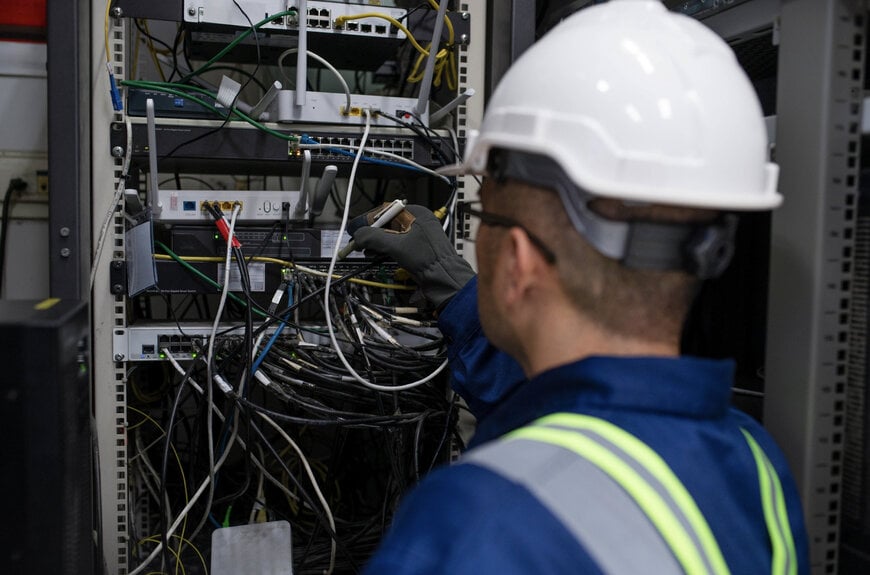Beckhoff Simplifies Automation Architecture With Unified Control Platform
Beckhoff’s PC-based control, TwinCAT platform, and MX-System simplify automation with scalable software integration and reduced hardware, wiring, and maintenance demands.
www.beckhoff.com

The word “automation” often conjures images of tangled cables, crowded control cabinets and layers of software, each performing a small part of a larger system. Yet as production lines evolve, this complexity can hold progress back. Here, Bradley McEwan, business development manager at automation specialist Beckhoff, explains why simplifying control architecture can unlock higher performance, faster development and longer system lifespans.
Every automation engineer knows that complexity has a cost. Multiple controllers, fieldbuses and interfaces can lead to longer commissioning times and higher maintenance demands. According to a 2024 PwC digital trends in operations survey, more than two-thirds (69 per cent) of operations and supply-chain officers reported that tech investments hadn’t fully delivered their expected results with the most-selected reason being integration complexity (30 per cent).
Traditional automation systems rely on a network of specialised devices: one for motion control, another for safety, another for data processing. Each must be configured separately and linked together through intricate communication layers. This fragmented setup means that even small design changes can add weeks to development schedules and increasing engineering hours. Multiple suppliers and different programming environments contribute to longer commissioning times and greater dependency on specialist skills.
As a result, maintenance becomes more reactive than preventative, spare parts inventories grow, and the total cost of ownership rises. For many OEMs, the complexity built into legacy control architectures directly limits their ability to respond quickly to new customer requirements.
A simpler alternative?
Beckhoff’s approach to “less complexity” lies in its PC-based control philosophy — using industrial PCs to run all automation functions in software rather than hardware. Motion, logic, safety, robotics, vision and even AI-based analytics can all be handled within the same real-time platform, known as TwinCAT. This reduces the need for multiple controllers and simplifies communication across the entire machine.
This unified architecture also allows for seamless expansion. Whether the machine has a handful of I/O points or thousands, the same control logic can scale without redesigning the system. It’s this scalability that helps manufacturers build more machines with the same engineering resources, which is a key advantage in competitive global markets.
Proof in practice
A good example of this principle in action comes from Schirmer Maschinen GmbH, a German manufacturer of machinery for processing window and door profiles. To simplify design and improve maintainability, Schirmer adopted Beckhoff’s MX-System, a modular, cabinet-free control platform that mounts directly onto the machine.
By removing conventional control cabinets, the company cut installation and wiring effort dramatically, while freeing up valuable floor space. The modular architecture also made servicing easier, with diagnostic data available directly at each module. The result was a cleaner, faster and more efficient production setup that still maintained full control performance.
For Schirmer, the MX-System “ticked all the boxes” for reliability and flexibility — a clear demonstration of how simplification can drive both innovation and practicality on the factory floor. “The MX-System is changing the face of design and installation in the world of machine building,” explained Ludger Martinschledde, managing director of Schirmer Maschinen GmbH.
In automation, adding more parts doesn’t always mean gaining more control. The opposite is often true. By reducing hardware, consolidating software and embracing open, PC-based architectures, manufacturers can build smarter, more flexible systems that evolve with their needs.
Complexity may once have been the price of sophistication, but a philosophy based on PC-based control shows that real innovation lies in making automation simpler — and that’s how engineers can achieve less complexity and more control.
www.beckhoff.com

